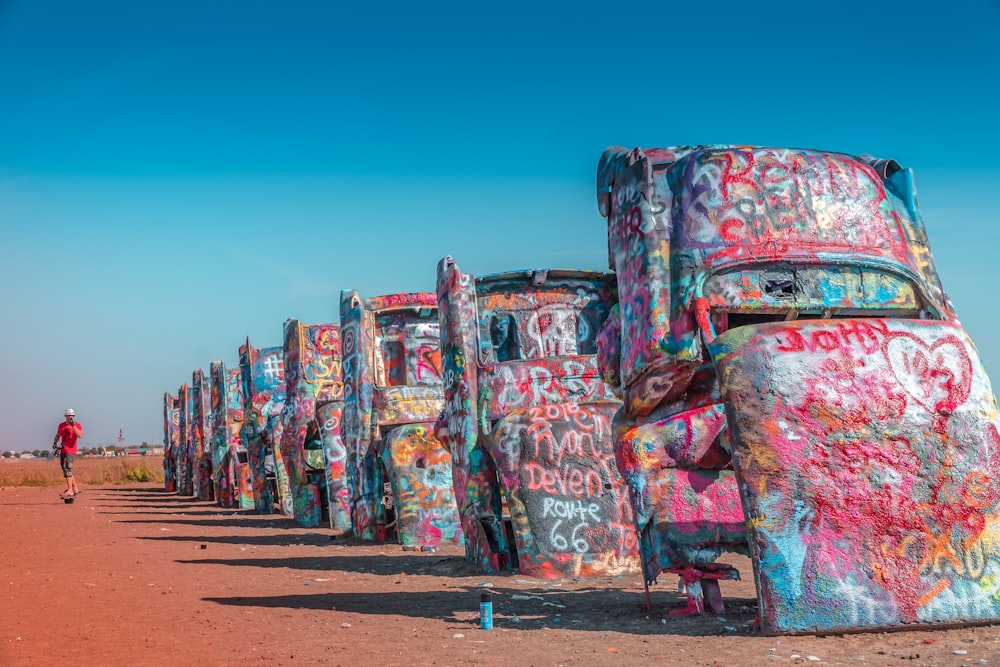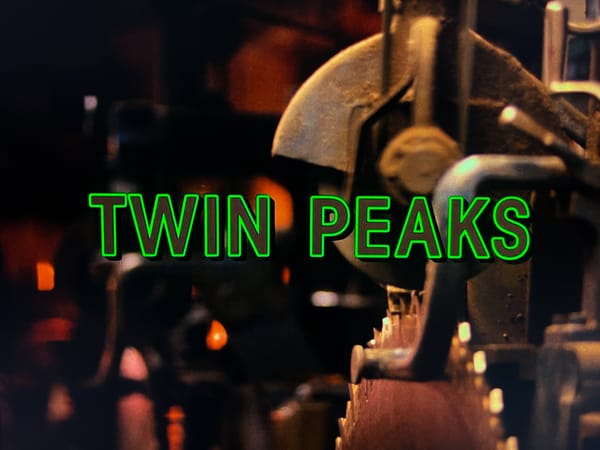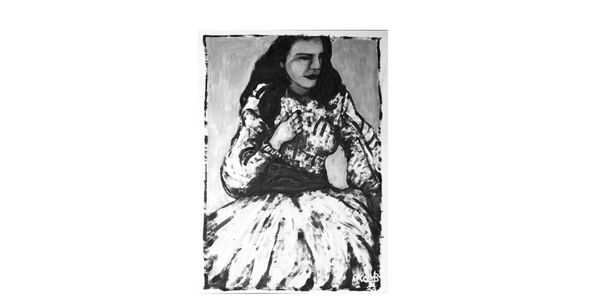Monuments vs. Sculptures
by Marci Hoffman
Recently, I attended a virtual webinar and discussion offered by the Wisconsin Historical Society about southern confederate monuments and how they continue to perpetuate American racism. The webinar explained how their existence causes tension and frustration to those of us who acknowledge, understand, and/or have been victims of systemic racism. The outrage some people have about removing the monuments seemed a little familiar. The installation of The Collective on College Avenue, perhaps?
Now, please understand that I am in no way comparing the severity of confederate monuments and systemic racism to the temporary discomfort The Collective presents to some in our community. What I’m more confused about is the inconsistency of public outrage - why is it OK to ask for the removal of The Collective, but absolutely NOT OK to ask for the removal of confederate monuments?
For centuries humans have embellished public spaces with visual pieces, whether for artistic or historic purposes, so it is no surprise that we find this in every community – in the south and in Appleton. We have a bust of Harry Houdini memorializing his childhood home that is overlooking the Welcome Tower filled with pieces by local artists, and adjacent to the crane on TMA’s roof. Near there is the Every Soldier’s Square Project, a monument to all United States veterans, active duty, and reserve service members. And, of course, The Collective sculpture down the street on College Avenue that brought so much emotion and discussion about what art means to Appleton.
Confederate monuments are...well...monuments. And The Collective is a sculpture. Not exactly the same thing, although they are both structures developed by artists, engineers, architects, and welders. And they are both usually displayed in a location meant for community engagement and to be seen, touched, and to provoke thought. They’re also extremely expensive to create and maintain (which is why museums cannot afford to accession them). However, their purpose and intention is what makes them interesting and distinguishable. One is a memory and the other is an expression.
Monuments have a message that the creator is communicating to the viewer. They often require a label to tell you what the creator wants you to know, and too often that is taken as historical fact. Sculptures, however, rarely have a label. They are meant to be subjective. It doesn’t matter what the creator states the purpose and meaning is, it is meant for the viewer to experience and interpret on their own. So, monuments (memories) mark a specific point in time and/or person, and sculpture (expression) can always be reinterpreted by whomever views it.
Monuments are also meant to be permanent which can be why they’re often misunderstood as historical fact. The trouble with permanence is that as a community grows, learns, and becomes more diverse, our ways of thinking change. And so does our collective identity and memory. This year alone, we have all experienced stress from the pandemic, racial violence, and now a contentious presidential election. We have been forced to slow down and pay attention to how our behavior affects our neighbors. It is literally a matter of life and death. When I look at the Civil War confederate monuments made more than a century ago, I have absolutely zero connection to an expensive bronze statue that was built on the backdrop of racial injustice and hatred. Nearly 800 confederate monuments were erected between 1890-1920. This was during the establishment of Jim Crow laws, segregation, and when we were experiencing an epidemic of lynching and race massacres. NOT immediately following the Civil War, so arguments that their purpose was to mark the historical bereavement and reconstruction of the south are false. All of these monuments are giant, expensive “whites, only” signs, and it is time for them to go.
Of course, we don’t see confederate monuments here in Appleton (we do see confederate flags, though). The point is, monuments are built more as a reflection of the individuals who built them rather than precise history and can be misunderstood as a historic fact. History is not lost when hate-filled monuments are removed. I have never learned a history lesson from a monument. There are other (better) ways of gaining historical knowledge.
Sculptures are a reflection of an artist’s expression. The Collective angered many people in our community, but personally (and since I’ve already crossed the line of sharing my opinion), that is my favorite sculpture in the city of Appleton. While everyone looks at it with rage and horror, I see the all of the emotions that every single one of us has, because that is what makes us human. Unlike the confederate monuments, I feel like I can relate to this sculpture. The Collective is aging with rust and wrinkles, and I can only imagine the stories it could tell. From what I understand, the artist created this while dealing with the stress of cancer. But there is no label. The artist doesn’t want to tell us how to respond, react, or experience the piece. It was up for the community to interpret on their own. The faces could technically represent everyone in our community who engaged in that discussion. But unlike a century’s-old monument, that sculpture will be temporarily exhibited. Within a few years, it will be removed and replaced by another.
Now, not all monuments are bad and not all sculptures are good, of course. And of course they all inspire emotion and get people to talk about deeper issues. I guess the biggest takeaway of my original question, “why it is NOT OK to ask for the removal of confederate monuments, but is OK to ask for the removal of The Collective” is a reflection of the purpose of each, and how communities view memory versus expression. One is perceived as inarguable truth with little to no room for alternative viewpoints. The other welcomes discussion with open arms (or faces?) and encourages debate.




